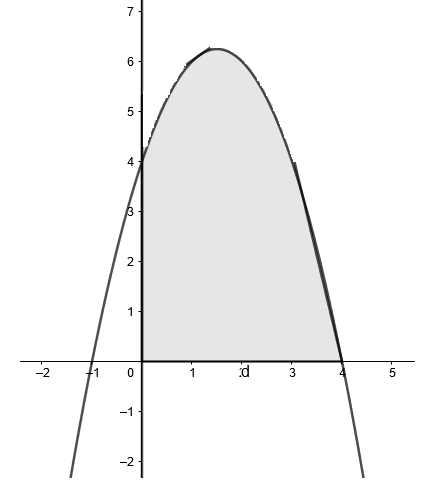Question
Question: Compute the larger area bounded by \[y=4+3x-{{x}^{2}}\]and the coordinate axes....
Compute the larger area bounded by y=4+3x−x2and the coordinate axes.
Solution
Hint: Try to find where the curve cuts the x axis. First try to make a rough sketch. Then find the area under the curve using integral.
Note that a quadratic function always represents a parabola.
So, first of all let’s try plotting the curve considering various values,
Note that at x=0,y=4
And at y=0,(x−4)(x+1)=0 or x=4,−1
Use the above observations to plot the graph.

The shaded region is the required area.
Hence, we can now find the area by integrating the function from x=0 to x=4.
The formula of finding the area enclosed by f(x) between x=a and x=b can be written as =∣a∫bf(x)dx∣.
So the required area under the curve is,
Area=0∫4(4+3x−x2)dx
Now we know the integration of sum of functions is sum of individual integration of the functions, i.e.,
Area=0∫44dx+0∫4(3x)dx−0∫4(x2)dx
On integrating, we get
Area=[4x]04+3[2x2]04−[3x3]04
Applying the limits, we get
Area=[4(4)−4(0)]+3[242−202]−[343−302]
On solving, we get
Area=16+24−364
Taking the LCM, we get
Area=340×3−64
Area=340×3−64=3120−64
Area=356sq. units
Therefore the area under the curve is 356 sq. units.
Note: The possibility of mistake is that students might take the lower limit as −1 considering the curve and forget to note that it is asked to find the area of the curve with the coordinate axes, so the lower limit will be 0.
